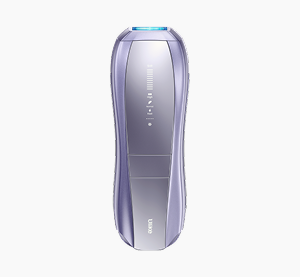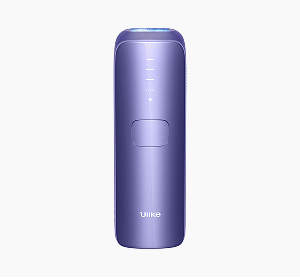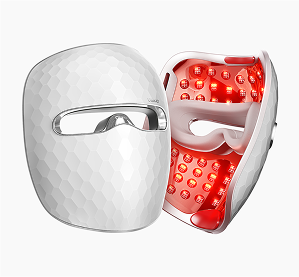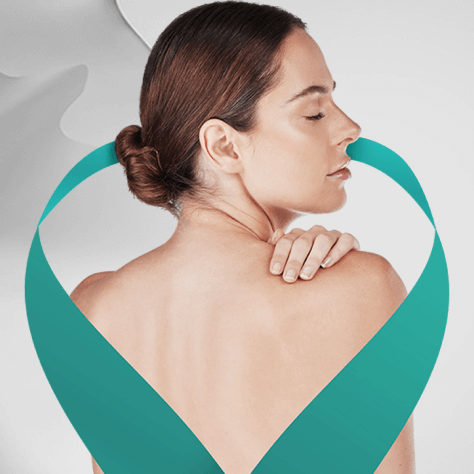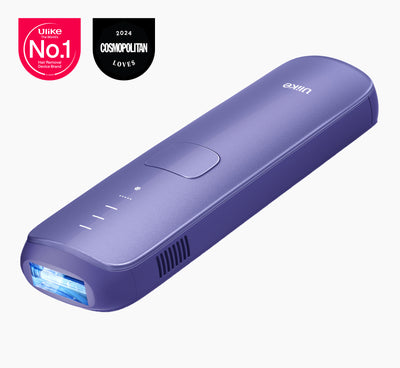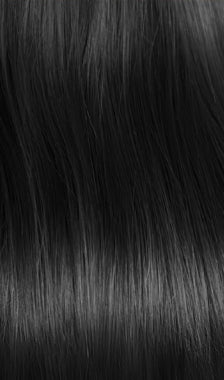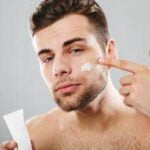
What Hair Removal Is Best for Ingrown Hairs? (4 Ways)
We all want to get rid of unwanted hair from our bodies and faces, but none of us want that removed hair to grow back, especially into ingrown hair, right? Well, no matter how much we try, there is always the risk of developing ingrown hair.
This hair appears as a bump with a dark spot on the skin and makes our freshly shaved skin appear flawed. And then we start trying a variety of methods to remove that ingrown hair.
Some of the methods work well to remove them while the other are ineffective. So, do you want to know which hair removal method actually works the best for ingrown hairs?
Understanding which methods are effective can help you achieve smoother skin and reduce the occurrence of ingrown hairs.
If yes, explore it with us.
Table of Contents:
- Part 1: What are Ingrown Hairs?
- Part 2: What are the Causes of Ingrown Hairs?
- Part 3: What are the Methods to Remove Ingrown Hairs? (4 Ways)
- Part 4: What Methods Should Be Avoided if You Get Ingrown Hair?
- Part 5: What Hair Removal Methods is Best for Ingrown Hairs?
- Part 6: How to Treat Ingrown Hair?
-
Part 7: How to Prevent Ingrown Hair?
1. What are Ingrown Hairs?
 Ingrown hair, also known as pseudofolliculitis barbae/PFB, is the condition of the skin and the hair in which the half-broken strand of the hair twists itself and grows into the superficial layer of the skin.
Ingrown hair, also known as pseudofolliculitis barbae/PFB, is the condition of the skin and the hair in which the half-broken strand of the hair twists itself and grows into the superficial layer of the skin.
Ingrown hairs can be uncomfortable and may lead to further skin issues if not properly managed.
Ingrown hairs often occur in the parts of the body with thick and dark hair like the pubes and legs. This is also the reason why only a few people experience ingrown hair on their faces except the chin. Note that, the thick beards of men are also prone to ingrown hair.
An ingrown hair causes symptoms like a bump on the skin, redness, inflammation, pain, tenderness, and skin irritation. Furthermore, an ingrown hair can appear in the form of papules, and pustules, and can also complicate and form cysts.
These symptoms can significantly affect your comfort and may require treatment to alleviate.
2. What are the Causes of Ingrown Hairs?
Inappropriate removal of the hair from the skin results in ingrown hair. So, here are a few causes that can make you prone to ingrown hairs.
Understanding the causes of ingrown hairs is essential for effective prevention and treatment strategies.
- Close shaves that cause the remanent of the hair to grow back into the skin
- Use of a dull blade while shaving does not cut the hair strand sharply and also irritates the skin
- Breaking the hair strands when you wax or tweeze the unwanted hair, especially on skin with accumulated dead skin cells and excessive oils
- Wearing tight clothes that creates friction
Close shaves can increase the risk of ingrown hairs, making it vital to use proper shaving techniques.
Using a dull blade can lead to irritation, which can exacerbate the likelihood of ingrown hairs.
Breaking hair strands during waxing or tweezing can lead to ingrown hairs, especially when combined with skin that has excess dead skin cells and oils.
Tight clothing can cause friction against the skin, increasing the likelihood of ingrown hairs forming.
Also, note that ingrown hairs act like foreign bodies, initiate an immune reaction in the skin, and cause inflammation.
Ingrown hairs not only irritate the skin but can also trigger an immune response, leading to inflammation and discomfort.
3. What are the Methods to Remove Ingrown Hairs? (4 Ways)
Here are three methods of hair removal that help in the removal of the hair in a way that you avoid ingrown hair. Also, these methods can help you get rid of ingrown hair as well.
Using effective hair removal methods can significantly reduce the occurrence of ingrown hairs and alleviate existing ones.
Depilatory Creams
 Hair removal creams do not trim the hair. Rather, it dissolves the protein in the hair strands. There are little to no chances for this dissolved hair to grow back into the skin. Consequently, you can achieve ingrown hair-free skin.
Hair removal creams do not trim the hair. Rather, it dissolves the protein in the hair strands. There are little to no chances for this dissolved hair to grow back into the skin. Consequently, you can achieve ingrown hair-free skin.
Furthermore, depilatory creams are also one of the most common methods of hair removal in areas with thick hair like the pubic region, armpits, and legs.
Depilatory creams dissolve hair at the skin's surface, making them popular for areas like the pubic region and armpits.
Laser Hair Removal
 If we think about the root cause of ingrown hair, it is the trimmed strands growing back into the skin, right? Therefore, you can remove the ingrown hair for good by stopping the unwanted hair from growing in the first place.
If we think about the root cause of ingrown hair, it is the trimmed strands growing back into the skin, right? Therefore, you can remove the ingrown hair for good by stopping the unwanted hair from growing in the first place.
The top method that can help you stop the growth of ingrown hair and also make the thick hair fine is laser hair removal.
Laser hair removal is a leading option for minimizing ingrown hairs by targeting hair follicles to reduce hair thickness.
IPL Hair Removal Devices
 Laser hair removal can be uncomfortable and expensive. Additionally, it can be inconvenient because of monthly hair removal sessions. In such cases, IPL hair removal devices can serve as the ultimate way to remove unwanted hair.
Laser hair removal can be uncomfortable and expensive. Additionally, it can be inconvenient because of monthly hair removal sessions. In such cases, IPL hair removal devices can serve as the ultimate way to remove unwanted hair.
IPL hair removal devices provide a more convenient and cost-effective alternative to traditional laser treatments.
The working principle of these devices is almost the same as that of laser hair removal. However, these are economical, nearly painless, and convenient.
These devices operate similarly to laser treatments, but they are designed to be more economical and less painful for users.
Electrolysis
 Electrolysis is another way to get rid of unwanted hair from the roots. It treats the hair follicles individually and allows you to remove the most annoying ingrown hair at first.
Electrolysis is another way to get rid of unwanted hair from the roots. It treats the hair follicles individually and allows you to remove the most annoying ingrown hair at first.
However, it can be painful and you need up to 30 sessions to treat a whole area.
While electrolysis can be effective, it's important to note that individual experiences with pain may vary, and some people may find it more tolerable than others.
4. What Methods Should Be Avoided if You Get Ingrown Hair?
If you get ingrown hair often, here are some hair removal methods that you should avoid.
These methods can exacerbate the issue of ingrown hairs and lead to further skin irritation or complications.
Shaving
Shaving is the worst thing you can do to your skin if you get ingrown hair. If you shave close to your skin or your shaving blade is dull, the hair grows back quickly into the surface of the skin.
Waxing
While it seems like waxing removes the hair from the roots, there are chances that some hair is not completely removed with the wax. These hair strands also grow back into the skin resulting in an inflammatory reaction and thus ingrown hair.
Tweezing
At times, pointed tweezers can be used to remove the ingrown hair. However, without proper preparation and technique of tweezing, there is a risk of breaking the hair strand and thus getting unwanted ingrown hair.
To minimize complications, it's crucial to prepare the skin properly and use the correct technique when tweezing.
5. What Hair Removal Methods is Best for Ingrown Hairs?
If we compare the methods of hair removal that are suitable for ingrown hair, it is apparent that semi-permanent hair removal is the way to go. Laser hair removal and IPL hair removal are two of the semi-permanent methods you can try.
IPL is preferred out of the two because of the following reasons,
- IPL hair removal devices can last for decades allowing you to perform initial treatment and follow-up sessions as you like
- In contrast to the pricking pain of laser, IPL hair removal is more gentle and comfortable on the skin
- The cost of IPL hair removal is much less than that of the laser
- There is no need to book sessions and travel every month to get the laser treatment with IPL
- IPL hair removal devices offer fast treatments and noticeable results in just a few weeks
The longevity of IPL devices makes them a cost-effective choice for long-term hair removal solutions.
For those sensitive to pain, the gentler nature of IPL can provide a more comfortable experience during treatments.
This makes IPL a more accessible option for many individuals who are concerned about budget when considering hair removal treatments.
Laser treatment with IPL offers convenience since it eliminates the need for frequent trips to the clinic.
IPL hair removal devices can provide effective results quickly, making them a popular choice for those seeking to manage ingrown hairs.
If you decide to go with IPL hair removal devices, we suggest you try If you decide to go with IPL hair removal devices, we suggest you try Ulike Air 10 IPL Laser Hair Removal Device, a dermatologist-recommended hair removal handset with ice-cooling technology.
6. How to Treat Ingrown Hair?
Here are the treatment options you can use to treat ingrown hair.
Ingrown hair treatments can vary, so it's essential to explore multiple options to find what works best for you.
Apply Warm Complex
As the broken hair strand is stuck in the skin, you have to open the skin pores to remove the ingrown hair. For this, simply soak a towel in warm water and apply it to the area with ingrown hair.
Keep the towel for a few minutes until the skin is softened and the hair is removed. After that, take a sterile needle or pointed tweezer and carefully remove the ingrown hair in a well-lit room.
Applying warmth helps ease the removal process, making it safer and more effective.
Use Topical Treatments
Some topical treatment options are also available to treat both ingrown hair and its symptoms. These include,
Topical treatments can significantly alleviate discomfort associated with ingrown hairs.
- Steroid ointments that work as anti-inflammatory agents to calm skin redness and irritation
- Tretinoids and benzoyl peroxide help in reducing the complications of ingrown hair like the development of acne and cysts
- Clindamycin can be used in case of folliculitis associated with ingrown hair
Steroid ointments can effectively reduce inflammation, promoting a smoother recovery for irritated skin.
Tretinoids and benzoyl peroxide are beneficial for preventing additional skin issues related to ingrown hairs.
Clindamycin is an antibiotic that may help reduce inflammation and treat infections related to folliculitis.
Exfoliate the Skin
Skin exfoliation removes the topmost layer of the dead skin cells that are present above the ingrown hair. Once that layer is removed, the hair is exposed on the surface of the skin and it grows naturally as well.
Here are the agents you can use to exfoliate the skin,
- Physical gentle exfoliants
- Chemical exfoliants like glycolic acid, salicylic acid, AHA, and BHA
Physical gentle exfoliants include scrubs or brushes that can help slough off dead skin without causing irritation.
Chemical exfoliants like glycolic acid and salicylic acid work by dissolving dead skin cells, promoting smoother skin and reducing the risk of ingrown hairs.
Try Natural Remedies
Treating your skin with home remedies can also be used for the treatment of ingrown hair. Some of the home remedies for ingrown hair include,
- Dilute tea tree oil
- An organic exfoliating mixture made of sugar, body oil, and honey
- Aloe vera and witch hazel to soothe inflammation
Dilute tea tree oil is known for its antibacterial properties, which may help soothe the skin and prevent infection.
An organic exfoliating mixture can provide a natural way to gently remove dead skin and help release trapped hairs.
Aloe vera is known for its soothing properties, while witch hazel may help reduce inflammation, making these natural remedies popular choices for calming irritated skin.
7. How to Prevent Ingrown Hair?
Lastly, let us discuss some ways to prevent ingrown hair.
- Removal of the hair from the roots with methods like electrolysis, IPL, and laser can help you avoid ingrown hair
- Exfoliate your skin regularly to reduce the buildup of dead skin cells that interfere with the adequate removal of unwanted hair from the skin
- Moisturize your skin after hair removal to reduce friction and skin dryness
- Always use a sharp fresh blade if you choose to shave unwanted hair
Electrolysis, IPL, and laser hair removal are effective techniques that target hair follicles directly, potentially reducing the likelihood of ingrown hairs.
Regular exfoliation can enhance skin renewal, helping to prevent ingrown hairs by ensuring that hair can grow freely through the skin.
By moisturizing your skin after hair removal, you can help maintain skin elasticity and prevent irritation that may lead to ingrown hairs.
Using a sharp and fresh blade when shaving minimizes the risk of pulling hair, which can contribute to the development of ingrown hairs.
Conclusion
Ingrown hair appears as inflamed bumps on the areas with thick hair growth because of substandard removal of unwanted hair by methods like waxing, shaving, and tweezing.
The hair removal methods that eliminate the hair strand by dissolving it or burning it can be used to get rid of ingrown hair. These methods include hair removal creams, IPL, laser, and electrolysis.
Effective hair removal methods can help address ingrown hairs by targeting the hair strand directly. Consider consulting a professional to determine which method suits your skin type best.
The best of these methods can be laser hair removal and IPL technology as they remove the follicle that is causing ingrown hair.
Laser hair removal and IPL technology are often preferred due to their ability to target the hair follicle, potentially reducing the risk of future ingrown hairs.

5 Dermatologist Recommended At-Home Laser Hair Removal Devices 2025

Hair on Female Breast: Causes, How to Remove, And More

PCOS: What is it, Symptoms, and Management
Free Virtual 1-on-1 Consultation


